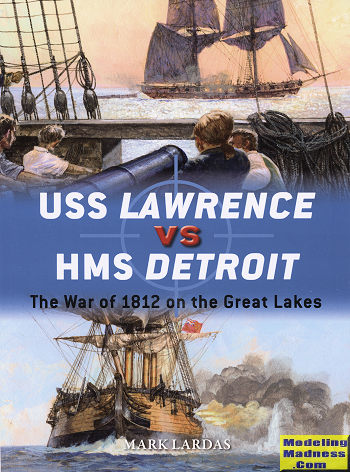 The
War of 1812 is something not all that well known outside the US and perhaps
Canada. It is a war where, if the British had not been involved in dealing
Napoleon, may well have turned out a bit differently. But then, it was that very
involvement that started the conflict. You see, at the time, the British were
very short on manpower for the Royal Navy. This led to press gangs nabbing
people from seaports to serve on ships and even extended to stopping ships at
sea and 'recruiting' any sailors they thought might be British subjects. This
included many American ships an often as not, the men pulled from these vessels
were American citizens.
The
War of 1812 is something not all that well known outside the US and perhaps
Canada. It is a war where, if the British had not been involved in dealing
Napoleon, may well have turned out a bit differently. But then, it was that very
involvement that started the conflict. You see, at the time, the British were
very short on manpower for the Royal Navy. This led to press gangs nabbing
people from seaports to serve on ships and even extended to stopping ships at
sea and 'recruiting' any sailors they thought might be British subjects. This
included many American ships an often as not, the men pulled from these vessels
were American citizens.
This gave the US the opportunity to try to snag some additional territory as
they thought the Canada should be part of the US. Using the impressments of
sailors as an excuse, and knowing that the British were involved in the
Napoleonic war, the US declared war. The downside of this is that the Royal Navy
ended up blockading American ports, making it difficult for US ships to do any
trade and the relative weakness of the US Navy was such that they were not
really able to stand up to the blockading ships.
Since most of the ground war took place in the areas around
what is now the Canadian border, it would make sense that the Great Lakes would
be a battle ground as well. However, there was darn little in the way of
warships on the Lakes. The lack of facilities, difficulty in getting gear into
this area and a real dearth of trained sailors on both sides, started things off
on a pretty even keel.
Both started building warships. Basically sloops-of-war were
all that were needed. These were generally 20 gun ships, modified for lake
operations (which mostly meant shallower draft). The US had a real advantage in
this area as from the beginning, the ship builder for US ships was able to
design and build a ship in much lesser time than it took the British. This was
mainly in the simplicity of design of American ships which did not use knees to
hold up the decks (you'll have to read up on that).
The British also relied on Ohio farmers for provisions and if
they did not control the lakes, they would starve. What ended up occurring was a
battle between the fleets on Lake Erie to determine control of the lakes. The US
fleet had a heavier weight of fire, but a lot of inexperienced men. Pretty much
the same lack of experience with the British. However, the US side had Perry.
This proved to be crucial as even though the battle looked very much like it
would be a British victory, it was the initiative of Perry that turned it into
the most crushing defeat the Royal Navy has ever had.
Sound interesting?
Well it is and I'm going to leave it to you to read this book
to find out how all of this happened. The author does a superb job of explaining
the situation as well as how the battle evolved and finished. It is his use of
mostly primary research and an open mind that weeds out a lot of conjecture and
wrong information to provide an eminently readable book. Full of great period
illustrations and some equally good art work, it is a book that will hold your
attention until the very end. Get this one. It is that good.
May 2017
Copyright ModelingMadness.com. All rights reserved.
For more on the complete line of Osprey books,
visit http://ospreypublishing.com.
If you would like your product reviewed fairly and quickly, please contact
me or see other details in the Note to
Contributors.
 The
War of 1812 is something not all that well known outside the US and perhaps
Canada. It is a war where, if the British had not been involved in dealing
Napoleon, may well have turned out a bit differently. But then, it was that very
involvement that started the conflict. You see, at the time, the British were
very short on manpower for the Royal Navy. This led to press gangs nabbing
people from seaports to serve on ships and even extended to stopping ships at
sea and 'recruiting' any sailors they thought might be British subjects. This
included many American ships an often as not, the men pulled from these vessels
were American citizens.
The
War of 1812 is something not all that well known outside the US and perhaps
Canada. It is a war where, if the British had not been involved in dealing
Napoleon, may well have turned out a bit differently. But then, it was that very
involvement that started the conflict. You see, at the time, the British were
very short on manpower for the Royal Navy. This led to press gangs nabbing
people from seaports to serve on ships and even extended to stopping ships at
sea and 'recruiting' any sailors they thought might be British subjects. This
included many American ships an often as not, the men pulled from these vessels
were American citizens.